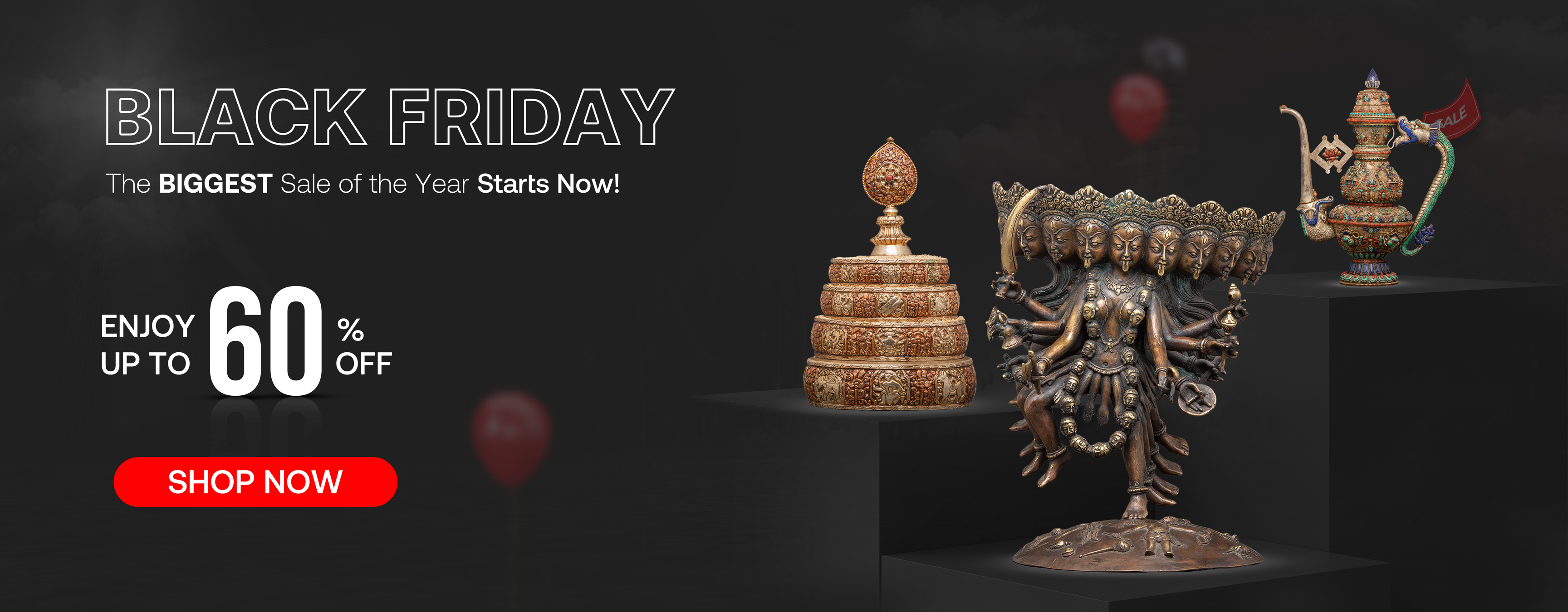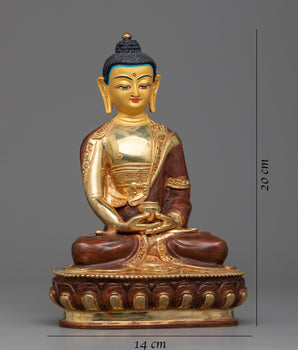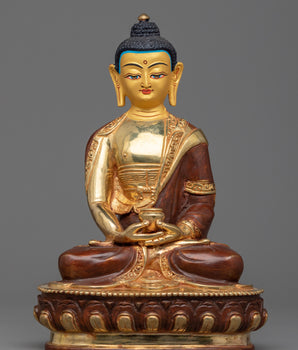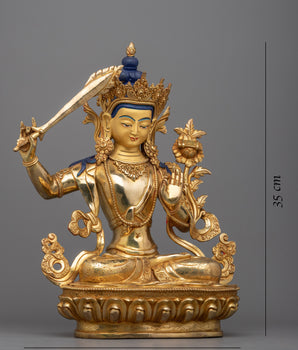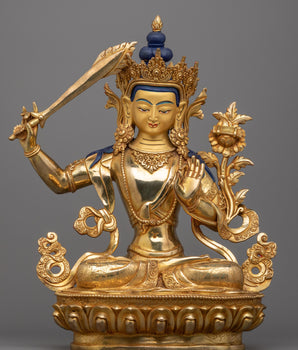Mandala thangkas are far more than decorative paintings. These intricate scrolls are sacred objects that distill centuries of Buddhist philosophy, artistic mastery, and spiritual practice into a single portable canvas. With their dazzling colors, symmetrical geometry, and layers of symbolism, they captivate art lovers, spiritual practitioners, and scholars alike. But to understand why mandala thangkas hold such fascination, we need to explore their origins, structure, creation process, types, and cultural significance.

What Is a Mandala Thangka?
A thangka (pronounced tung-ka) is a Tibetan Buddhist painting on cloth, mounted with silk brocade and designed for portability. Unlike traditional framed paintings, thangkas can be rolled up, allowing them to travel easily between monasteries, temples, and homes. They often depict Buddhas, bodhisattvas, protective deities, or historical teachers, serving both as visual aids for meditation and as teaching tools.
A mandala (Sanskrit for “circle”) is a geometric map of the universe used as a meditation device. When combined, a mandala thangka becomes a window into the enlightened cosmos: the viewer is invited to journey inward, passing through layers of symbolism toward spiritual awakening. According to the Rubin Museum of Art, mandalas are “visual representations of a perfected universe, tools to guide practitioners on the path to enlightenment”

Click here to View Mandala Thangka
The Origin of The Mandala Thangka
Buddhism’s Arrival in Tibet
Buddhism entered Tibet from India around the 7th century CE, becoming firmly rooted by the 11th century. Tibetan monks and artisans adopted Indian Pāla-style painting, known for its intricate linework and jewel-like colors, and combined it with influences from Nepal and China. This cultural fusion gave rise to a uniquely Tibetan art form: the thangka. Portable scrolls suited the nomadic culture of Tibetan Buddhism, allowing practitioners to carry sacred imagery wherever they traveled .
Nepalese Paubha Paintings
In Nepal’s Kathmandu Valley, the Newar community developed the paubha, a closely related painting tradition that predates Tibetan thangkas. Like thangkas, paubhas depict deities and mandalas, serving both devotional and meditative functions. The two traditions influenced each other heavily, reflecting centuries of cultural exchange across the Himalayas.
Mandalas in Tantric Buddhism
Mandalas first appeared in India around the 4th century CE, within the context of Tantric Buddhism. These diagrams symbolized sacred space, visualized as palaces inhabited by enlightened beings. As Buddhism spread, Tibetan practitioners formalized mandala iconography, establishing rules for proportion, color, and layout. By the 12th century, Tibetan mandala paintings had become central tools for tantric initiation ceremonies and meditation practices. 
Structure and Symbolism of Mandala in Thangka:
A mandala is a cosmic diagram. Its design is highly structured, with layers of meaning encoded in every detail:
-
The Outer Rings – These represent protective barriers between the mundane world and the sacred space of the mandala. Often they include:
-
A ring of flames, symbolizing wisdom burning away ignorance.
-
A vajra (diamond scepter) ring, representing indestructible truth.
-
A lotus ring, symbolizing purity.
-
-
The Square Palace – At the heart of the mandala lies a square “palace” with four T-shaped gates facing the cardinal directions. Each gate is guarded by fierce deities who protect the sacred realm.
-
The Central Deity – At the very center sits the main deity, often depicted in union with a consort, representing the union of wisdom and compassion. Surrounding figures—retinue deities, bodhisattvas, or wrathful protectors—populate the mandala, reinforcing its cosmic order.

The mandala is not just symbolic—it is functional. Practitioners use it as a visualization map during meditation, mentally entering the gates and progressing toward the center, where enlightenment awaits.
Types of Mandala Thangka:
1. By Technique
-
Painted Thangkas – The most common form, created with mineral pigments.
-
Appliqué Thangkas – Made from silk pieces sewn together, often on a monumental scale.
-
Black-, Gold-, or Red-Ground Thangkas – Named for their striking backgrounds, used for specific deities or rituals.
2. Classification by Deity:
In Vajrayāna Buddhism, mandalas are often named for the deity or enlightened figure at their center. Each deity embodies specific qualities or teachings, and their mandala provides a complete visual roadmap for spiritual practice. A few of the most iconic include:
-
Chakrasamvara Mandala
This is one of the most widely practiced tantric mandalas in Tibetan Buddhism. The central figure, Chakrasamvara, is depicted in union with Vajravarahi, symbolizing the inseparable nature of wisdom and compassion. Surrounding them are 62 deities arranged in precise geometric patterns. This mandala is central to the Kagyu and Gelug schools, and its practice focuses on transformation of passions into enlightened energy.
-
Kalachakra Mandala
Translating as “Wheel of Time,” the Kalachakra mandala is one of the most intricate and large-scale visualizations in Buddhism. Its design includes 722 deities and symbolizes the entire cosmos, as well as the inner energy system of the human body. The Kalachakra initiation is a major event often led by the Dalai Lama, attracting thousands of practitioners.
Kalachakra isn’t merely cosmic; it's deeply autobiographical. The tradition asserts a direct correlation between the universe’s cycles and the body’s subtle anatomy—its channels (nāḍīs), winds (prāṇa), drops (bindus), and chakras.
The Kalachakra teachings emphasize the phrase, “as it is outside, so it is within the body”, reflecting a holistic model where macrocosmic structures mirror microcosmic processes. This is why Kalachakra is often referred to as a cosmos and self simultaneously depicted, a mandala that externalizes inner spiritual mechanisms.
-
Mandalas Featuring Multiple Buddhas & Bodhisattvas
Green Tara, the “Mother of Liberation,” is a compassionate savior figure. Her mandala emphasizes swiftness in overcoming obstacles and fear, offering protection to devotees.
1. Five Wisdom Buddhas Mandala
Also known as the Five Jinas, this mandala features five cosmic Buddhas, each symbolizing a facet of enlightenment:
Vairocana (center, white)—embodies wisdom of the Dharmadhātu
Aksobhya (east, blue)—mirror-like wisdom
Ratnasambhava (south, yellow)—wisdom of equanimity
Amitabha (west, red)—discriminating wisdom
Amoghasiddhi (north, green)—all-accomplishing wisdom
These appear together in mandalas like the “Mandala of the Two Realms” when paired with Wisdom Kings. 
2. Bodhisattva Companions & Mandala Heroes
Each Buddha family also includes associated Bodhisattvas—sometimes called "Bodhisattva Heroes"—who embody particular qualities:
Manjushri (wisdom)
Avalokiteshvara (compassion)
Vajrapani (power)
Maitreya (future activity)
Kṣitigarbha,Samantabhadra, Sarvanivāranaviṣkambhin, Ākāśagarbha—each linked to virtues like merit, vows, purification, and blessings.
5. Pure Land & Cosmological Mandalas
-
Taima Mandala (Japanese Pure Land): depicts Amitābha (center) surrounded by enlightened beings—including bodhisattvas Kannon and Seishi—floating within the paradise of Sukhāvatī
-
Cosmological Mandalas (e.g., Mount Meru centered depictions): illustrate the entire Buddhist universe, with Buddhas and realms arrayed in concentric and symbolic geography
By Deity & Assembly
Buddhist mandalas often go beyond a single deity, presenting a cosmic assembly of Buddhas and Bodhisattvas that model spiritual wholeness.
-
Single Deity Mandalas (e.g., Green Tara, Hevajra): Focused meditation on a single enlightened figure’s qualities, often used in advanced tantric practice.
-
Multi-Buddha Mandalas: The Five Wisdom Buddhas (Vairocana, Akshobhya, Ratnasambhava, Amitabha, and Amoghasiddhi) represent five aspects of enlightened wisdom and the transformation of five mental afflictions. Surrounding them are their associated Bodhisattvas, such as Manjushri (wisdom) and Avalokiteshvara (compassion), forming a symbolic mandala of virtues.
-
Complex Assemblies: Some mandalas, like the Seventeen-Deity Tara Mandala, include layers of Buddhas, their consorts, and retinue figures. Each figure has precise placement, forming a visual ecosystem of enlightened qualities.
These multi-layered mandalas invite practitioners to see enlightenment not as a single point but as a network of interdependent wisdoms, qualities, and spiritual forces.
The Spiritual Significance of Mandala
For practitioners of Vajrayāna Buddhism, mandala thangkas are not decorative but sacred blueprints. Viewing or meditating on a mandala is considered a transformative act, guiding the viewer from ordinary perception toward enlightenment.
-
Meditation Aid: Practitioners visualize themselves entering the mandala, identifying with the central deity, and embodying enlightened qualities.
-
Teaching Tool: Thangkas serve as illustrated scriptures, conveying complex philosophy without words.
-
Merit-Making: Commissioning a thangka is believed to generate spiritual merit for the donor, benefiting themselves and others.
Why Mandala Thangkas Are Loved Worldwide
-
Artistic Mastery
The craftsmanship of mandala thangkas—precise geometry, vibrant mineral colors, delicate gold detailing—is breathtaking. -
Symbolic Depth
Every detail has meaning. Colors correspond to elements, directions, or states of mind; deities symbolize spiritual qualities. -
Living Tradition
Monks still create sand mandalas in monasteries and museums, emphasizing impermanence through ritual dismantling. -
Cross-Cultural Appeal
Exhibitions at The Met, Rubin Museum, and Asian Art Museum have introduced millions to the visual language of Tibetan Buddhism. -
Mindfulness in Color and Form
In today’s fast-paced world, the mandala’s symmetry and geometry offer a contemplative focus, making it both art and meditation.
Mandala thangkas are more than sacred paintings—they are a convergence of spiritual philosophy, meditative practice, and artistic mastery. Originating from the Himalayas but influenced by Indian and Nepalese traditions, these works continue to inspire across cultures.
Click here to View our exclusive Mandala Collection
Their enduring allure lies in their balance of beauty and depth: they are mesmerizing for their colors and patterns yet profound in spiritual symbolism. In every brushstroke lies centuries of tradition, inviting viewers to look beyond the surface and journey inward, toward the enlightened center.






